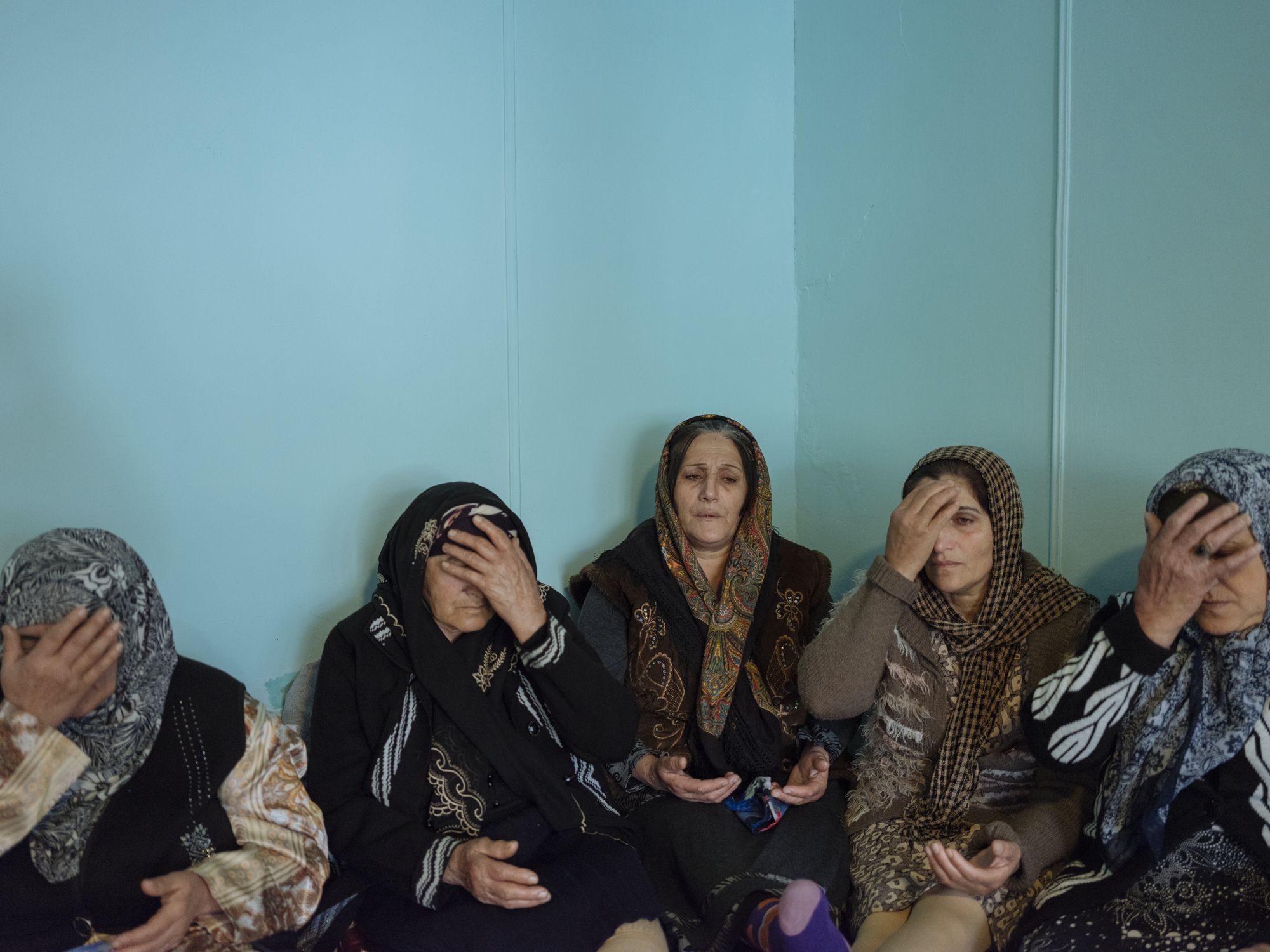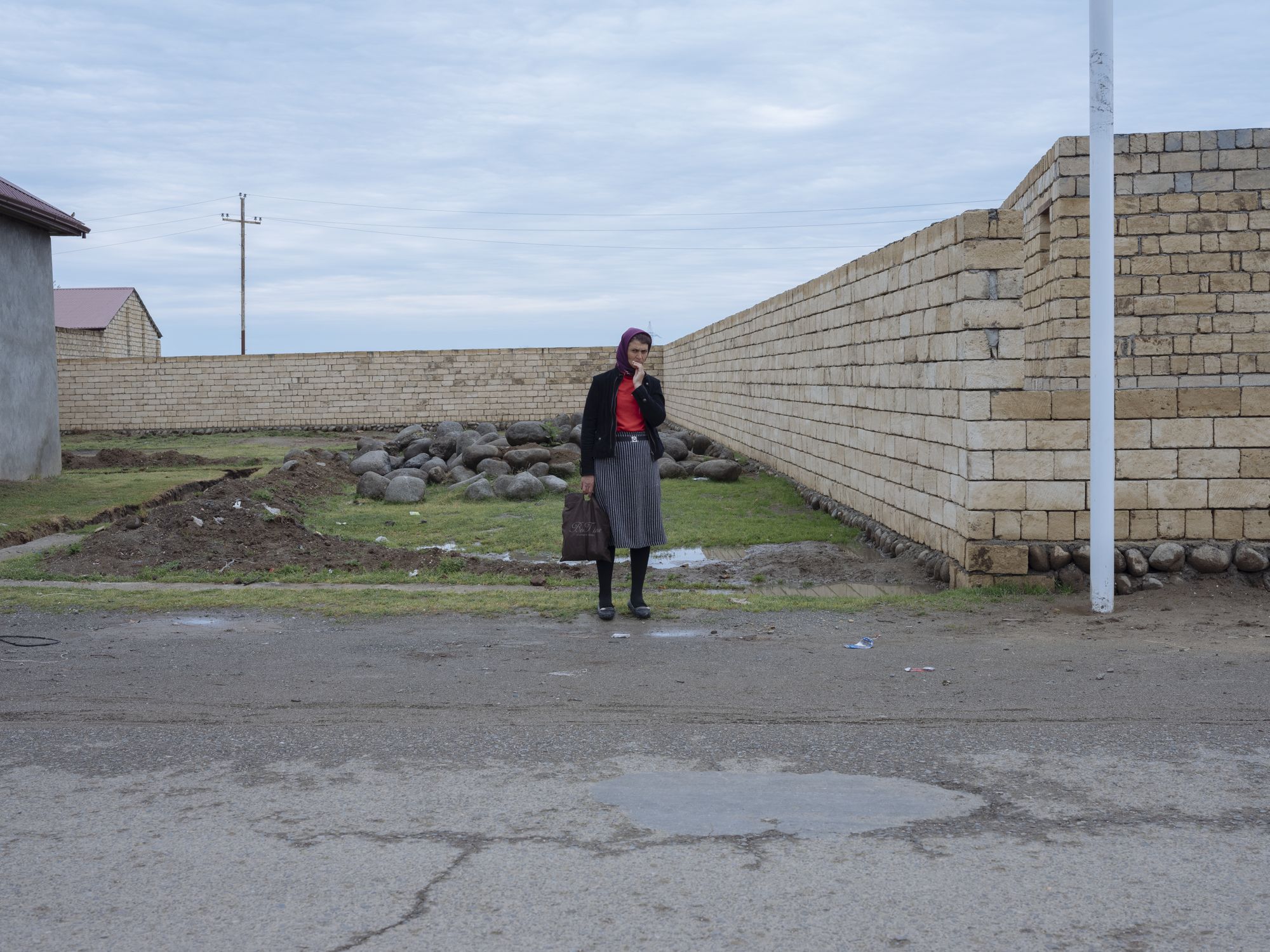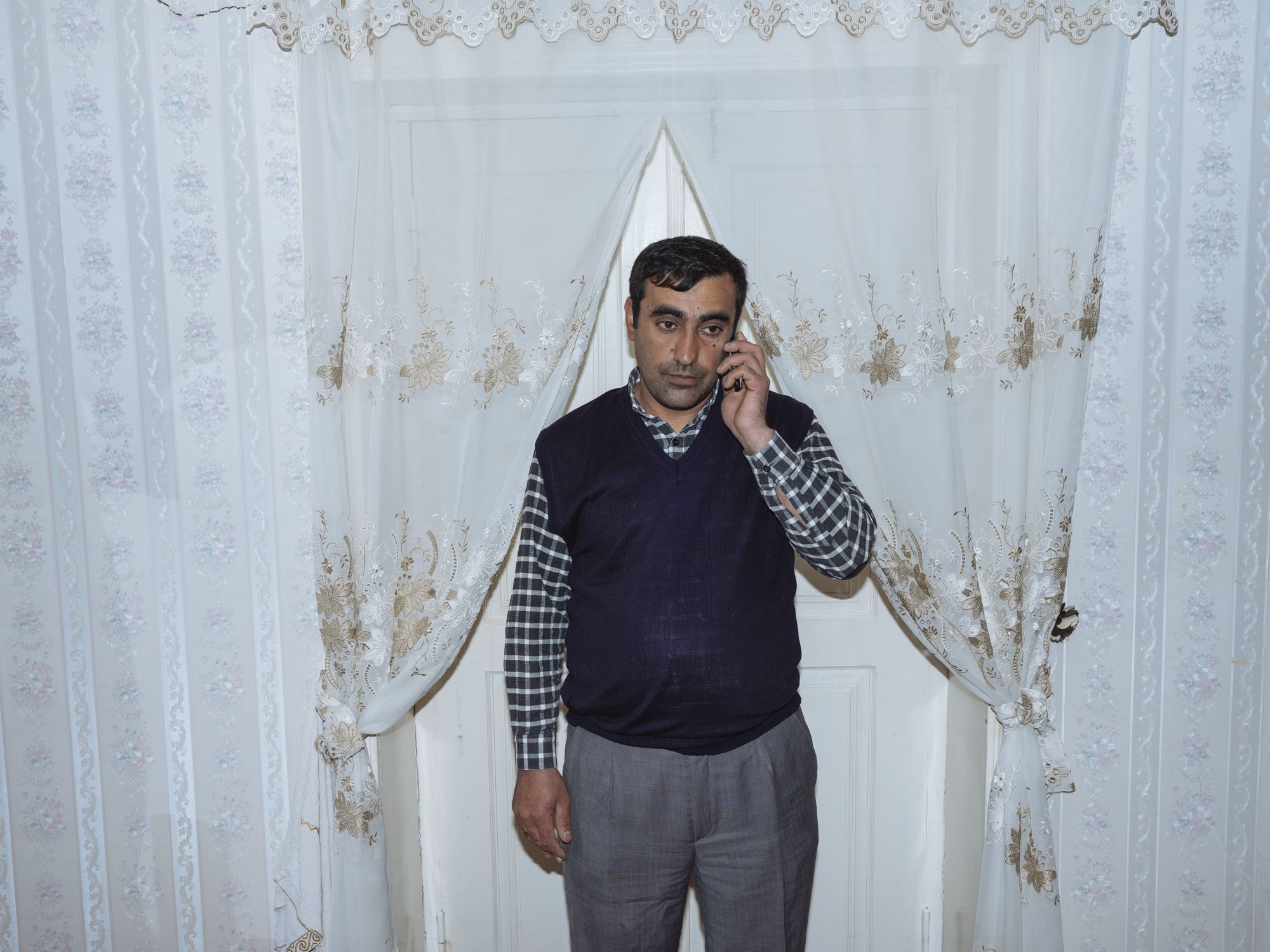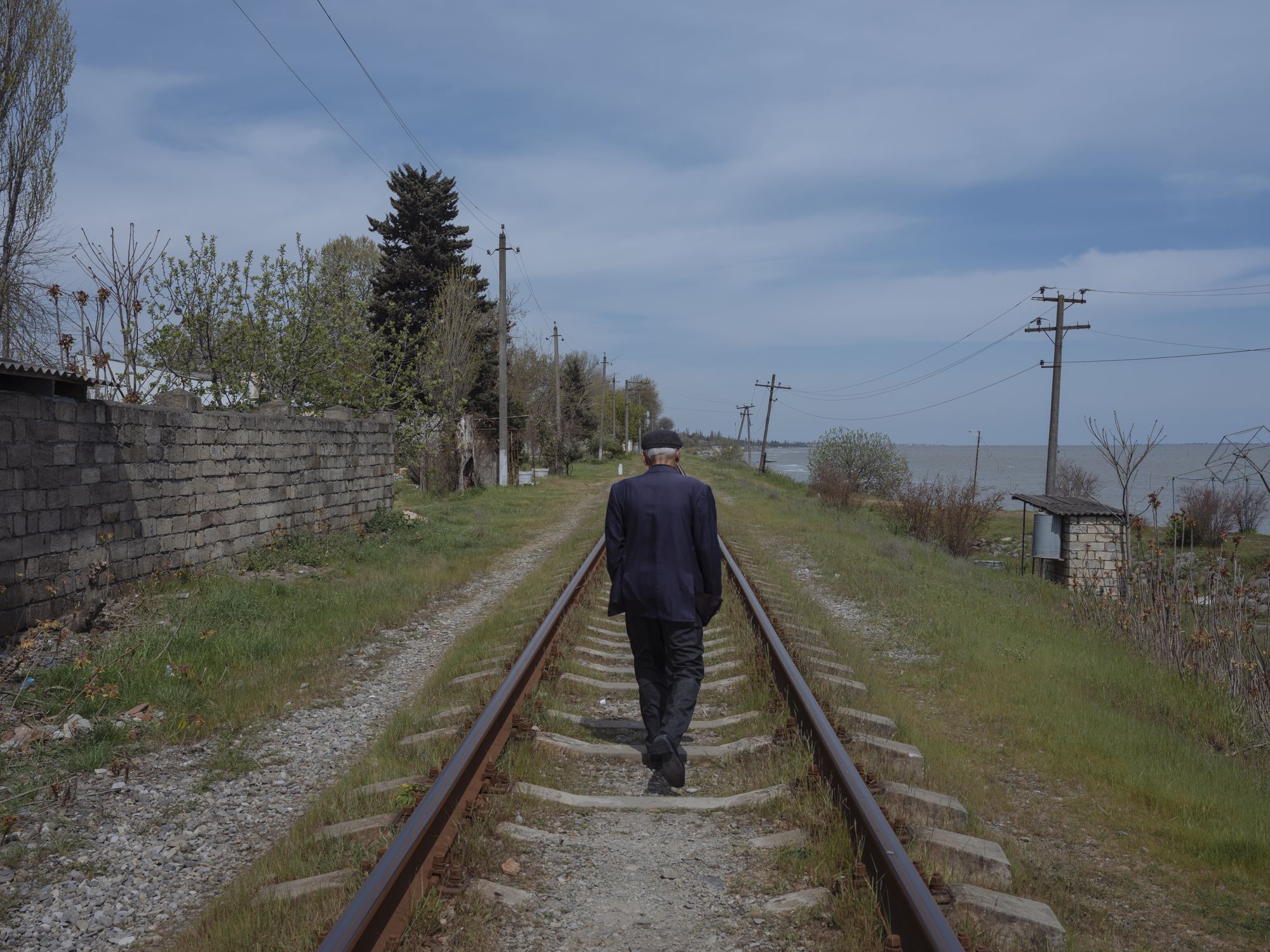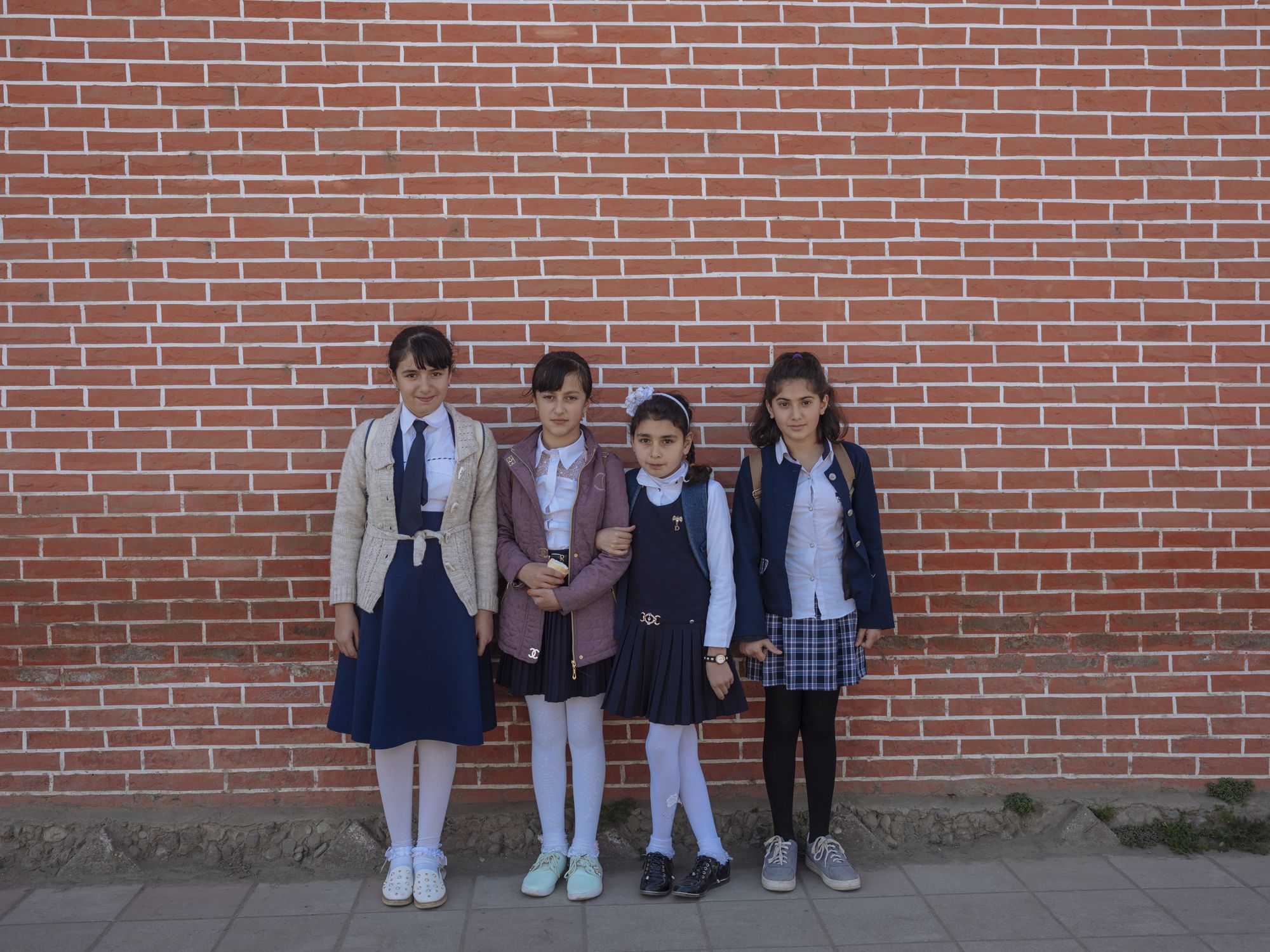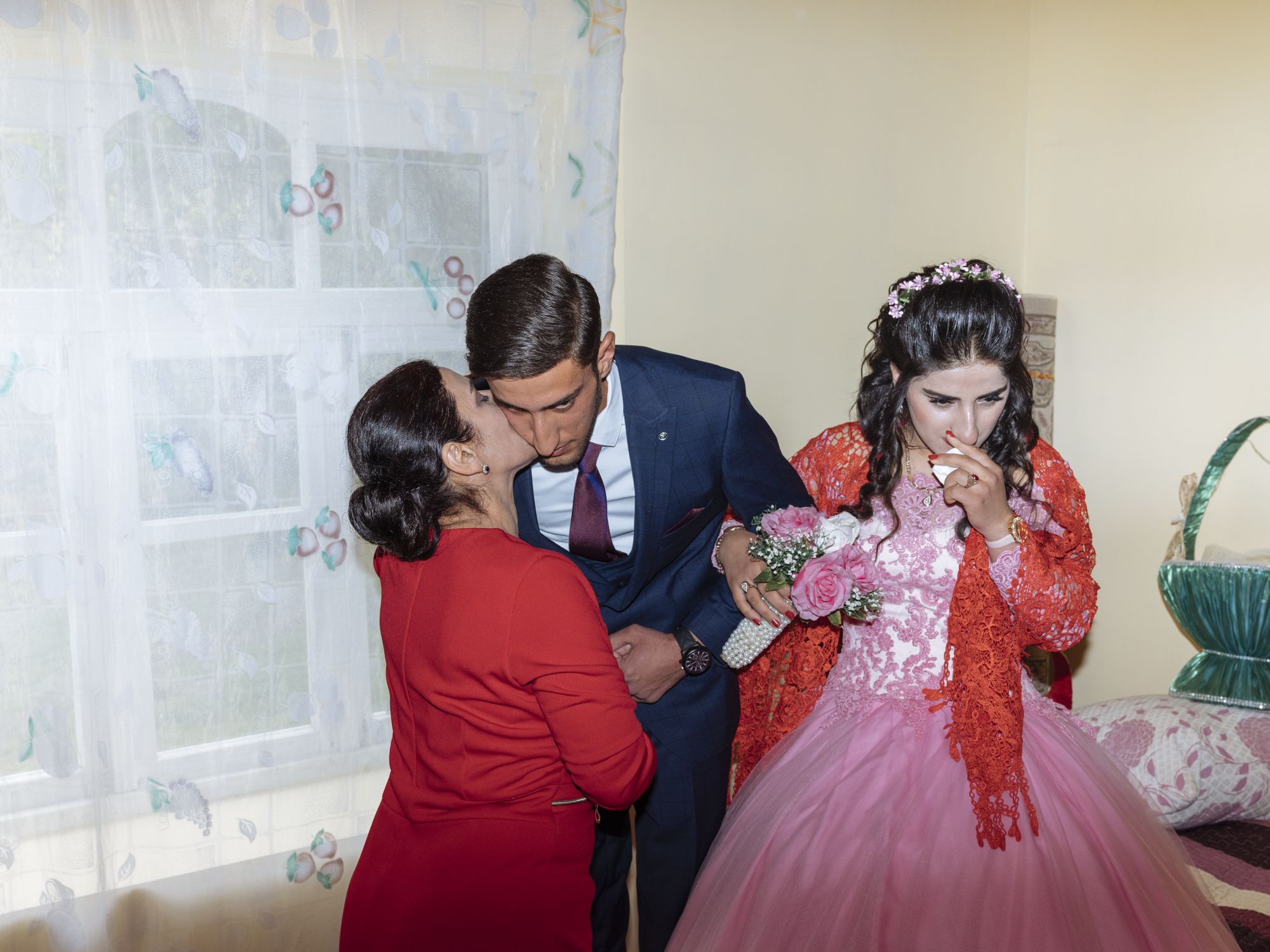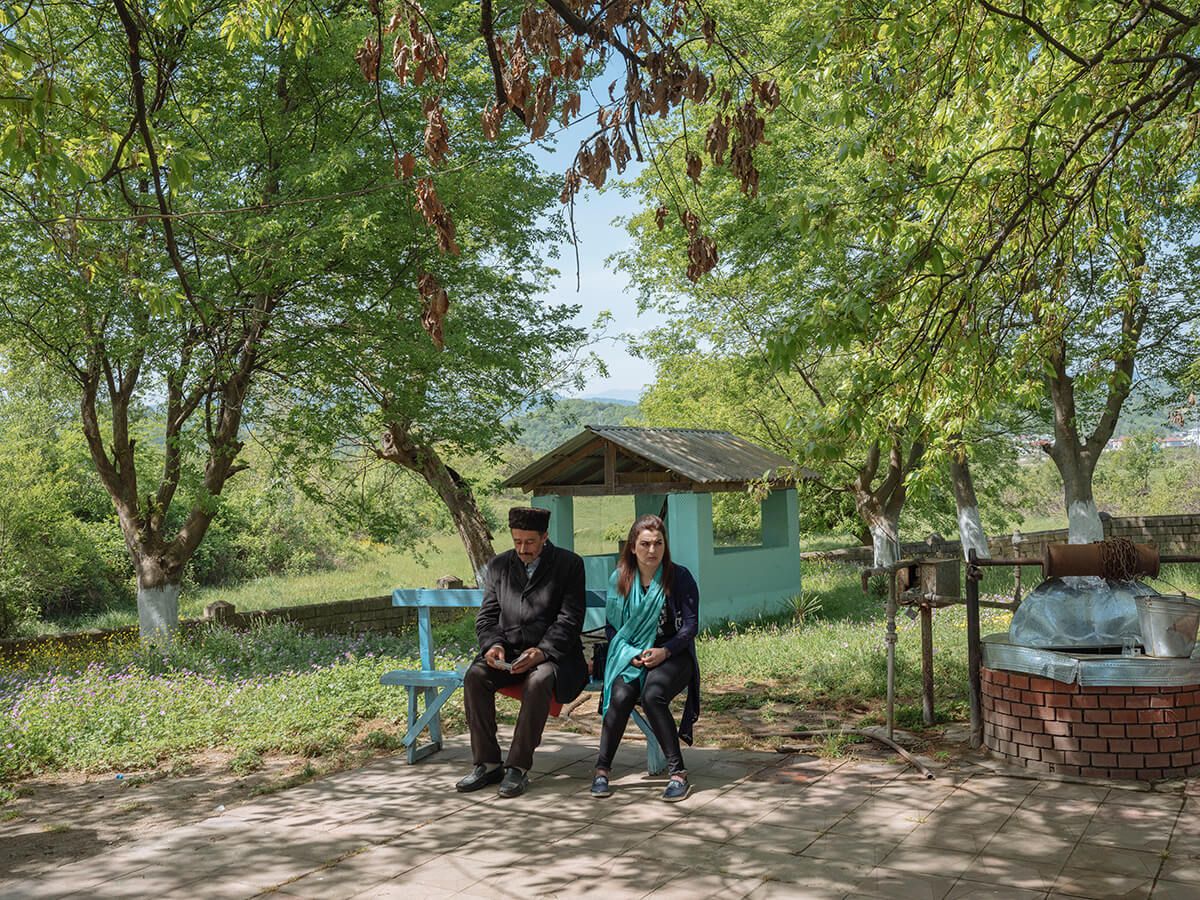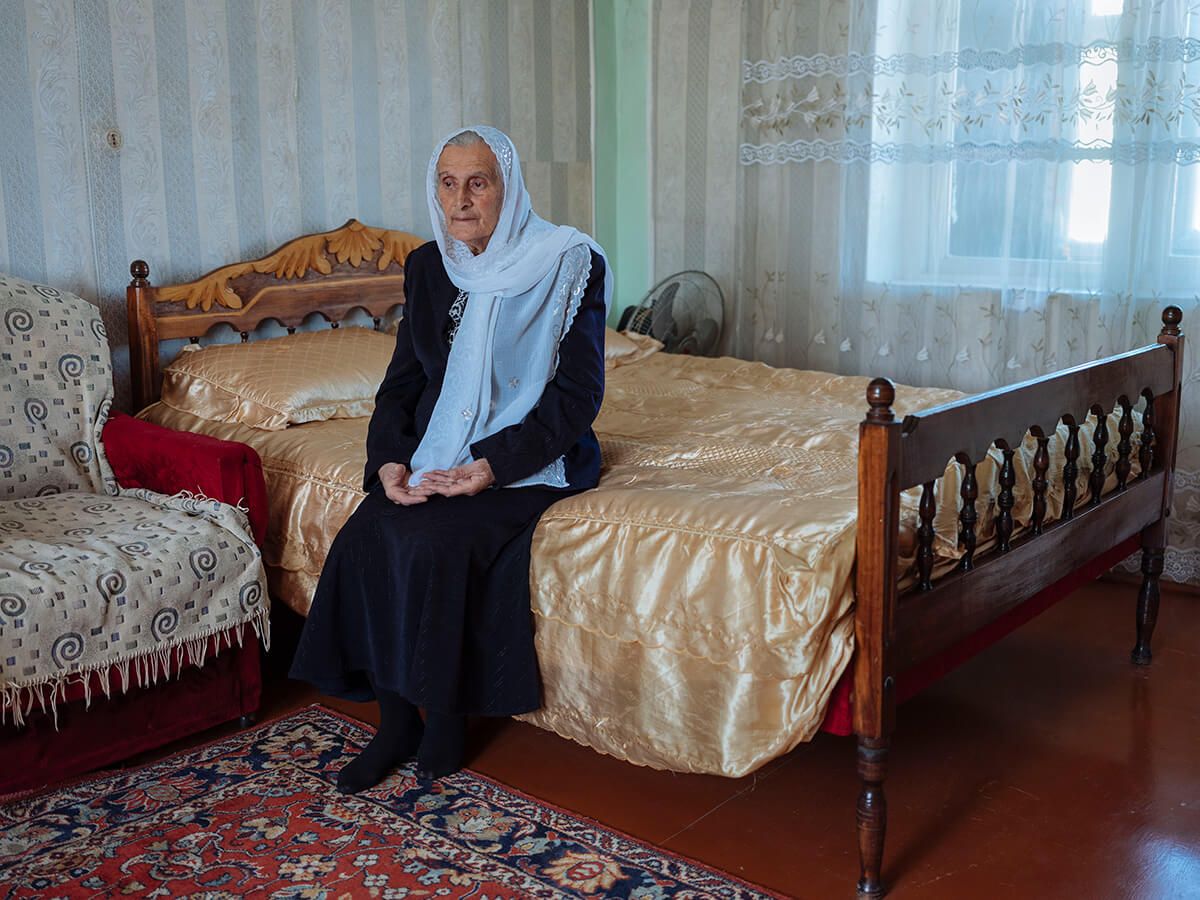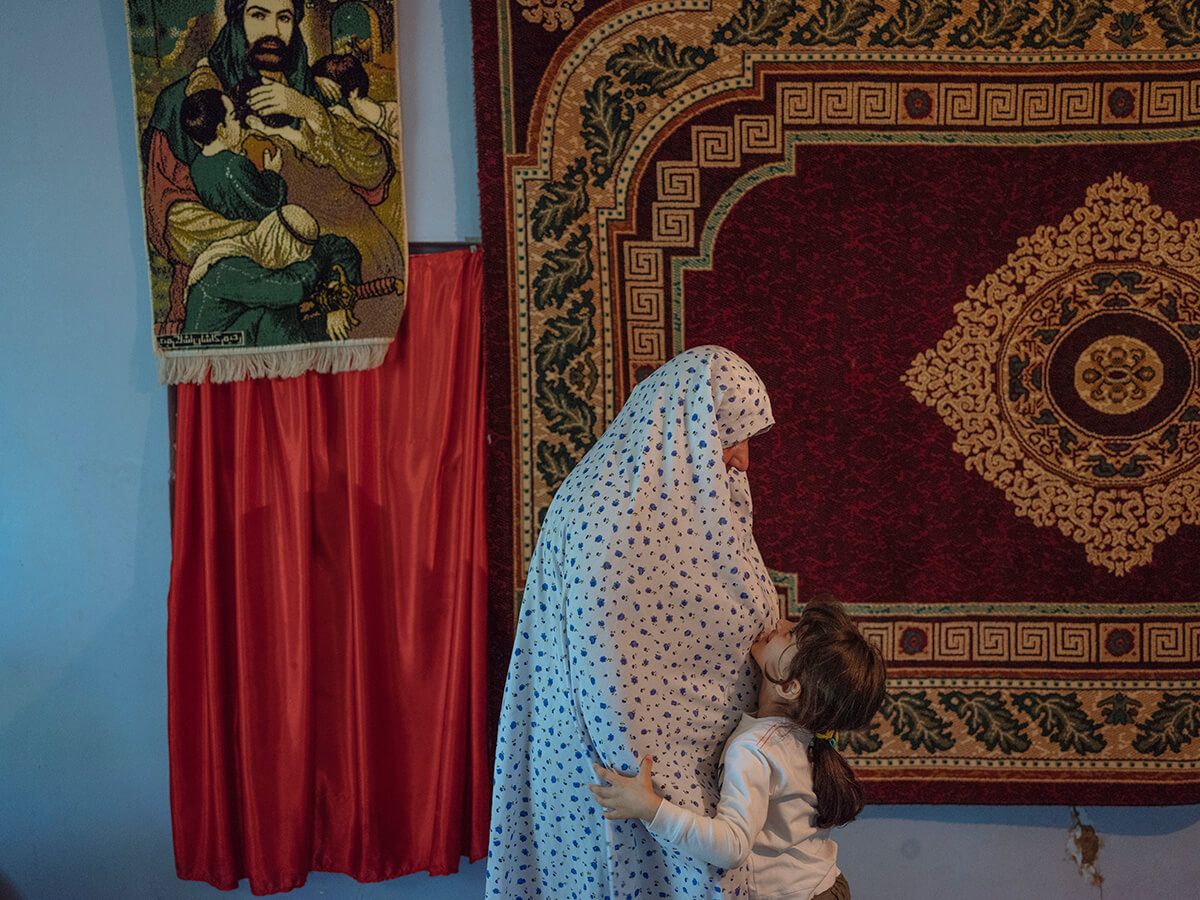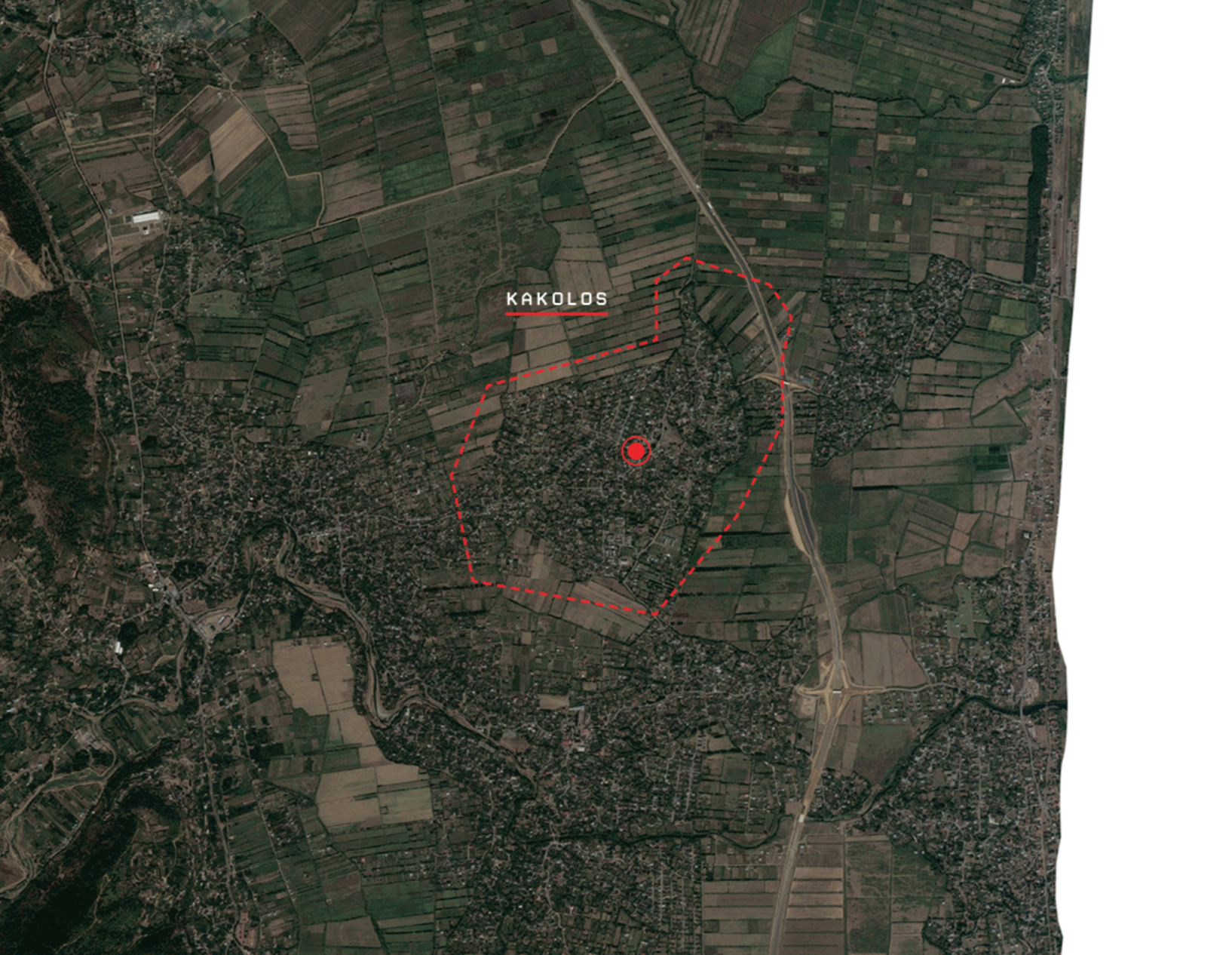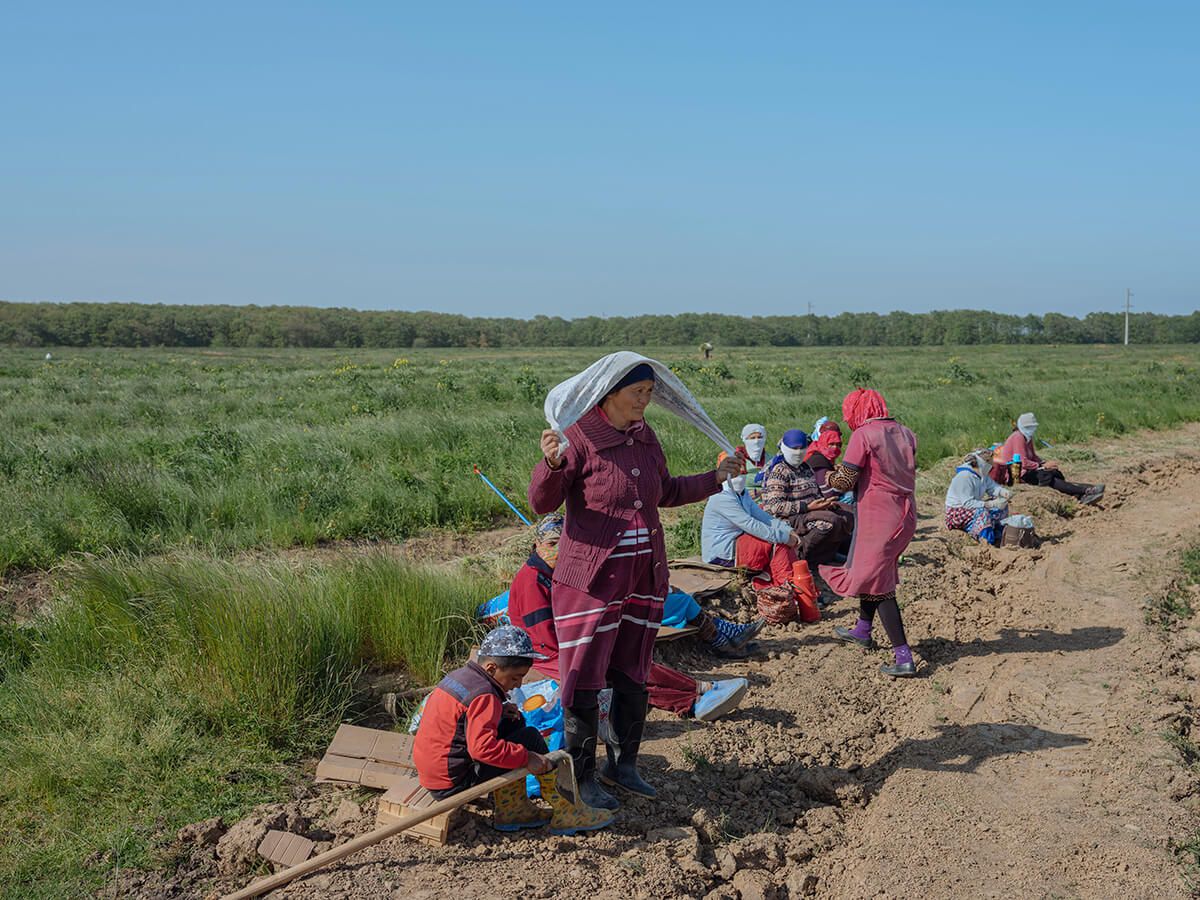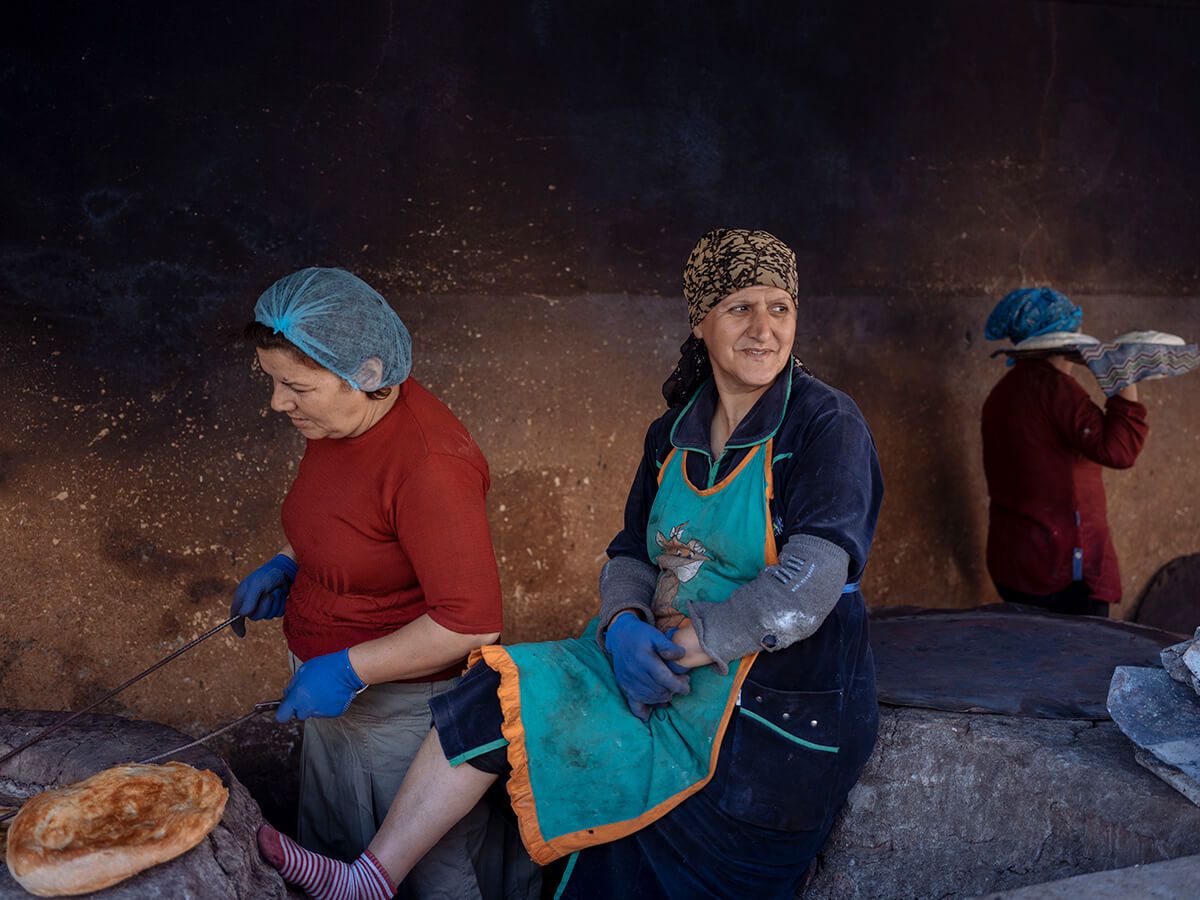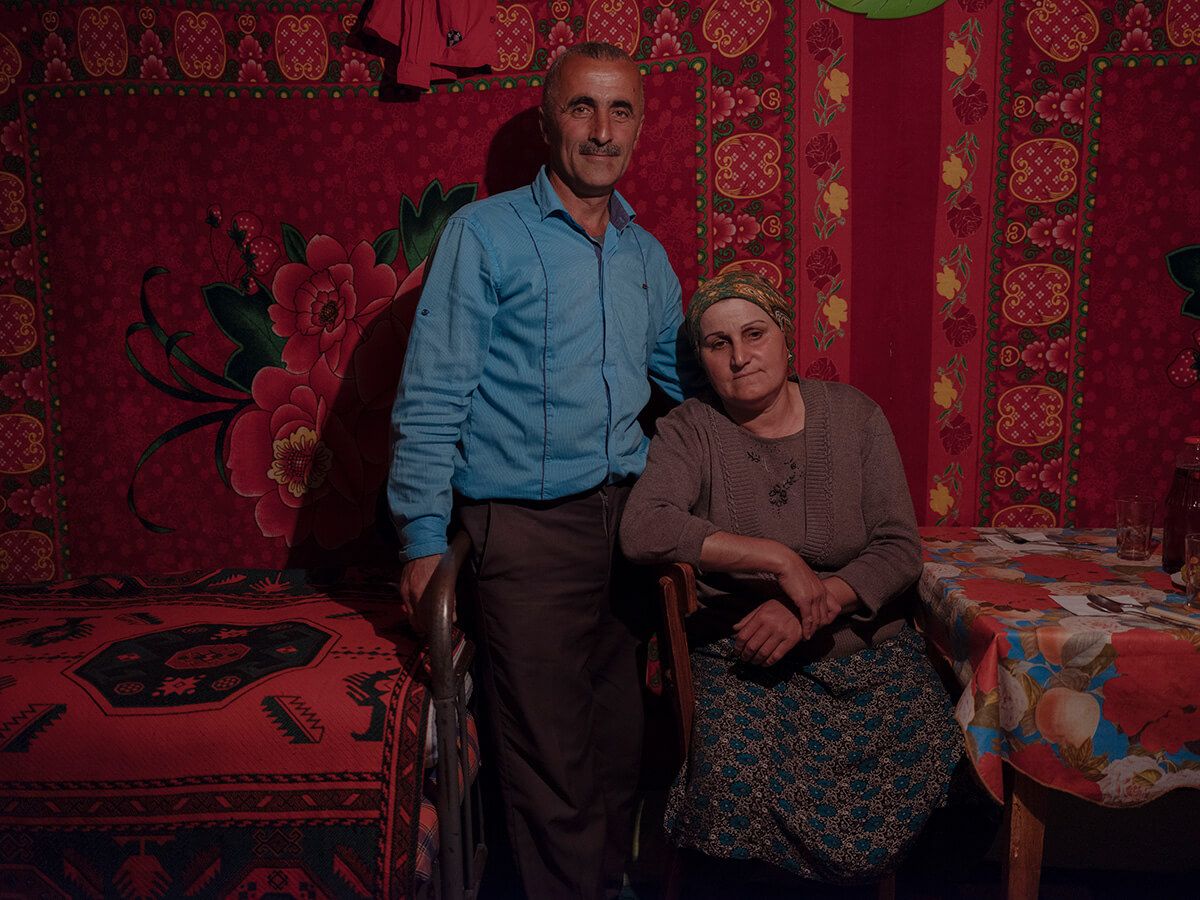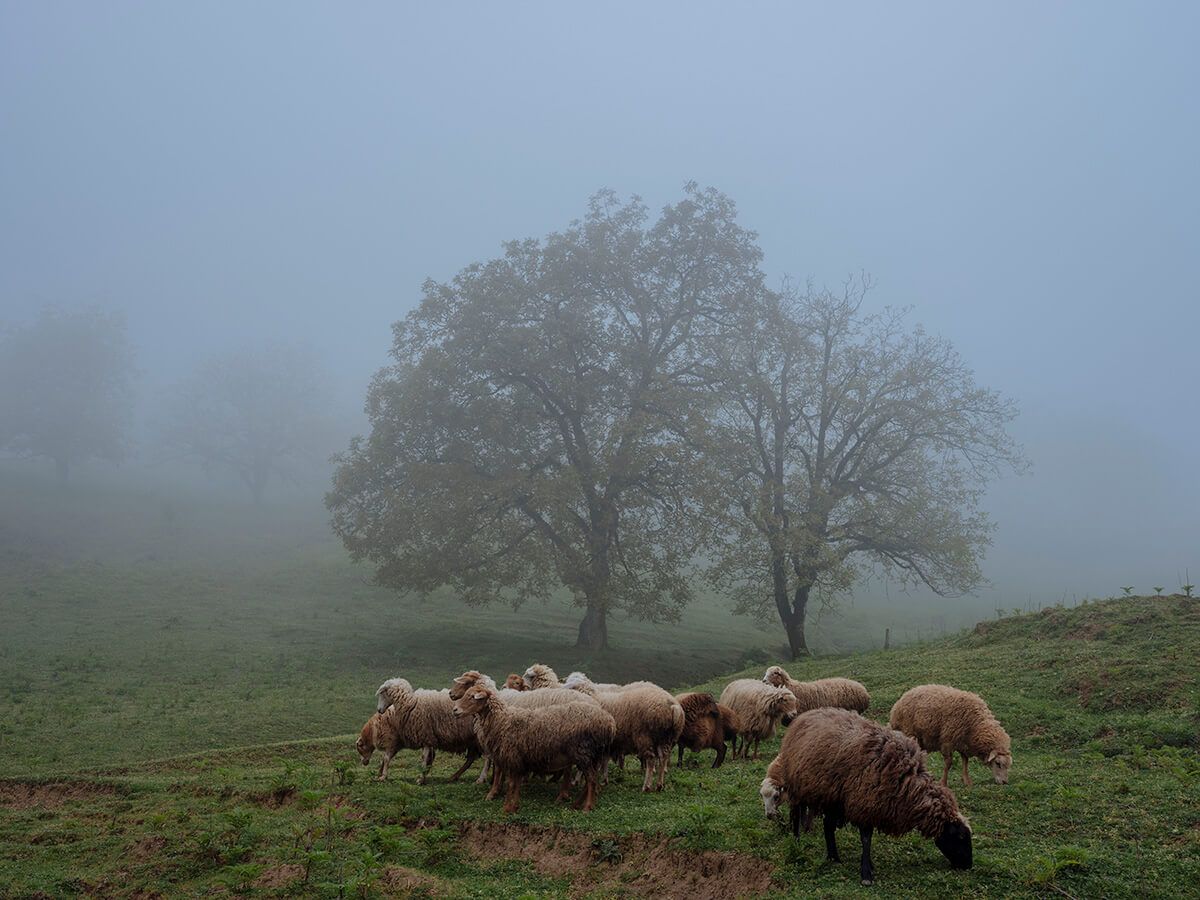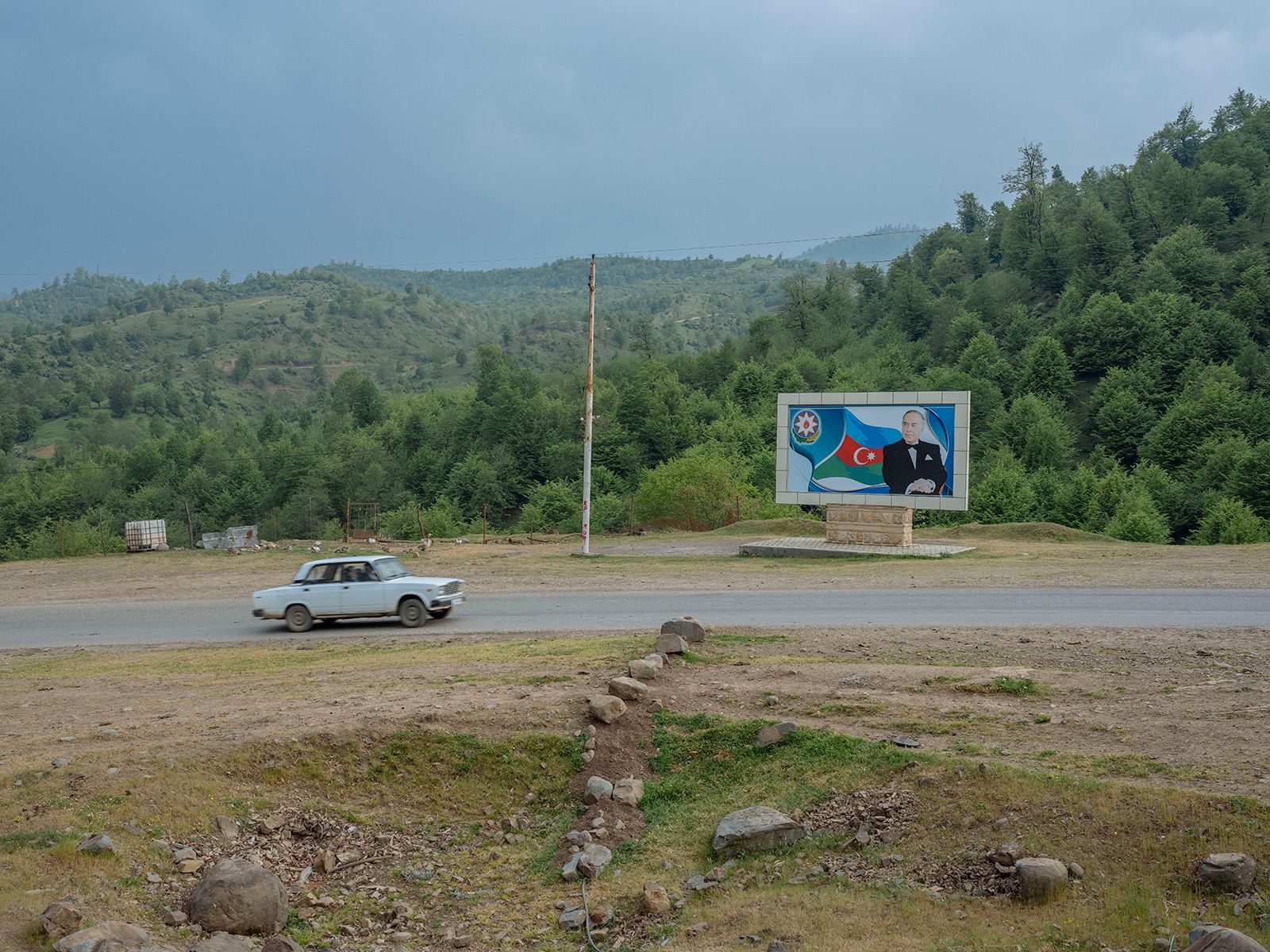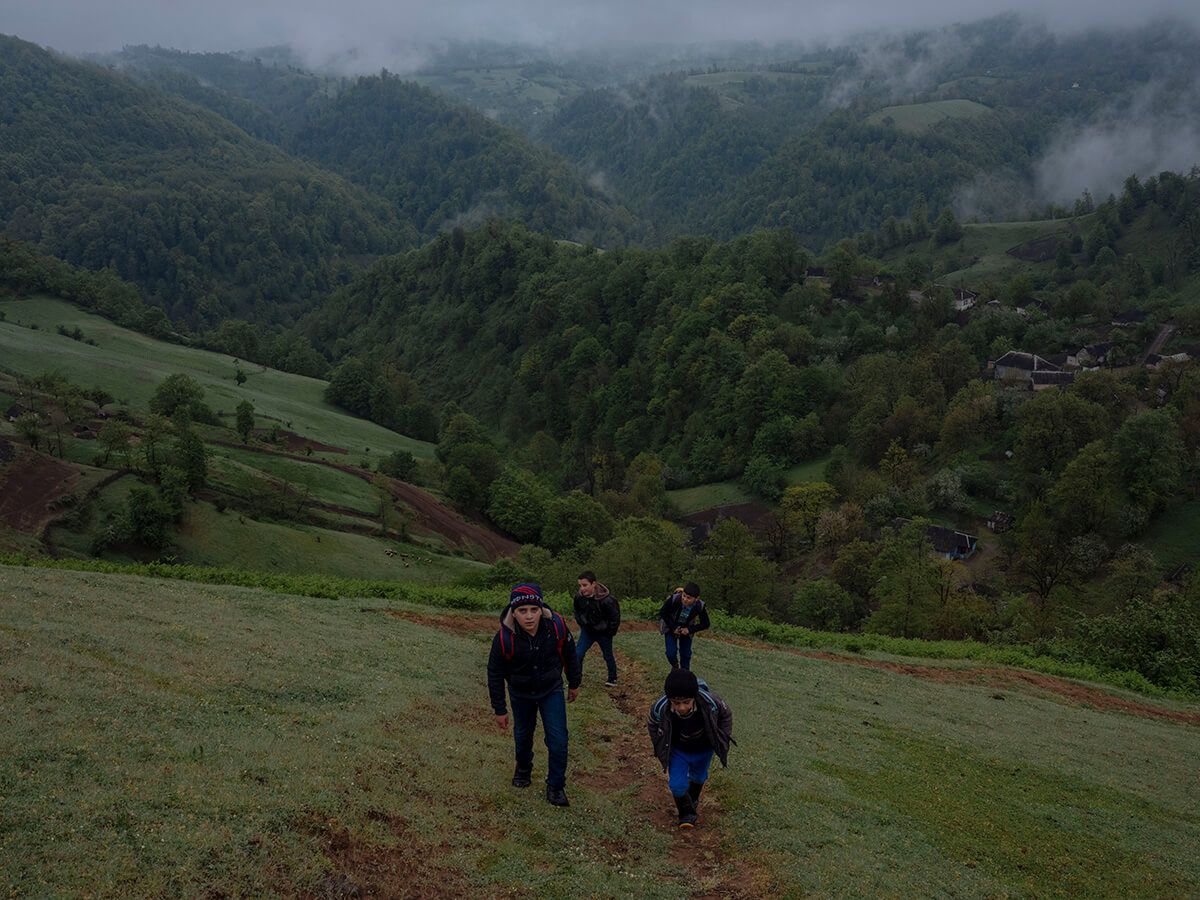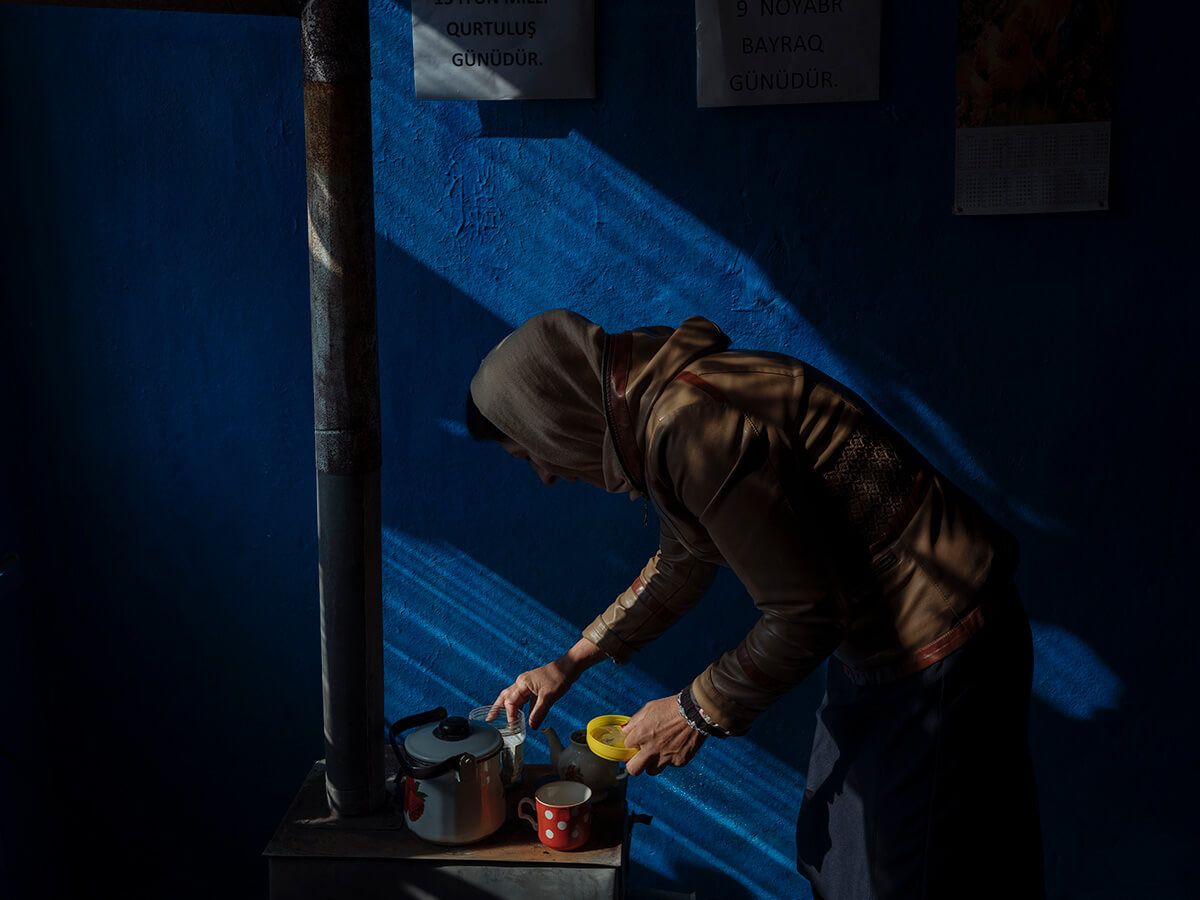The museum's main room looks like a market: hand-knit clothes and linens lined up on the floor; tables stacked with photographs, homemade dishware, a lone phonograph. The objects come from villagers in the town of Kakalos, Azerbaijan, where Febriye Sabaonva founded her theater-turned-cultural-museum more than 20 years ago.
Sabaonva—a 78-year-old fashion designer—wanted to build a space that preserves the history of residents in Kakalos, her hometown in southern Azerbaijan, where the majority of the country’s Talysh people live. An ethnic group indigenous to the area, for centuries the Talysh have lived mostly in farming communities centered around remote villages in the Talysh Mountains. Russia and Iran fought over sections of their territory during the Russo-Persian War in the early 19th century, and officially claimed different portions of it in the peace treaty that followed. The northern stretch became part of Azerbaijan upon the country’s independence from the Soviet Union in 1991.
Since then, the Talysh of Azerbaijan have confronted a kind of identity crisis—called upon by the pressures of national loyalty to identify as Azeri, yet maintaining mountain traditions distinct from the rest of Azerbaijan, including speaking an Iranian dialect. The Talysh language, which most schools do not teach, is decreasingly useful for addressing one of the community’s major concerns: finding jobs. Many Talysh seek work in larger, non-Talysh speaking cities farther north, where they can make more money than they can by farming in their villages. As their land remains underdeveloped and economically isolated, their language, already classified by the United Nations as vulnerable, loses relevance. Uniquely Talysh traditions and cultural memory—which has mostly been passed down orally—have gone with it.
Some Talysh activists have sought to protect their language and culture by pushing for land independence, in the form of an autonomous state. In 1993, a Talysh army colonel leading a small separatist movement proclaimed an independent Talysh-Mughan Autonomous Republic in the south. The republic ended just two months later, and the central Azerbaijani government arrested and imprisoned the colonel for treason. Since then, the government has devoted little attention and few resources to the community, and Talysh activists claim that their numbers are repeatedly undercounted in the national census.
The movement for an independent state never went mainstream among the Talysh, though the idea of separatism has not quite died. Independent Talysh groups, led by members of the former Talysh-Mughan Autonomous Republic, joined the international Unrepresented Nations and Peoples Organization twice between 2005 and 2014. A Talysh Revival Movement reportedly gathered in Russia for an international conference on self-determination in 2016. But pushes for autonomy have struggled because of a nebulous sense of Talysh identity, according to ethnographers who have studied the region. Talysh people often express ambiguity toward their own sense of Talyshness. These responses, researchers have argued, reflect the long history of that identity being marginalized.
Sabaonva, however, expresses pride in her Talysh background, and she has channeled it into her museum. The exhibits present traditional local objects—like a painted box containing a woman’s dowry—and photographs of notable villagers. The museum also offers classes in Talysh dance and a community theater, which was the first museum component Sabaonva launched. Two decades later, she received financial support from Azerbaijan’s Ministry of Culture and Tourism to expand the museum’s collection. She continues to work with women in town to run it; it’s an impossible job to manage alone, especially since she still works as a designer and costume-maker.
While continuing her work as a fashion designer and dressmaker, Sabaonva has watched all of her grandchildren and one of her sons go abroad for school, a fact she declares proudly. Of her four children, only that son, who is disabled, still lives in Kakalos. But she sees it as part of her job, as their mother, to reinforce their roots, both Talysh and Azerbaijani. “I tell my kids that no matter where you live now,” she says, “don’t forget Azerbaijani or Talysh language.”
- Visit our online curriculum for a lesson plan and full PDF of "Contested Lands."
